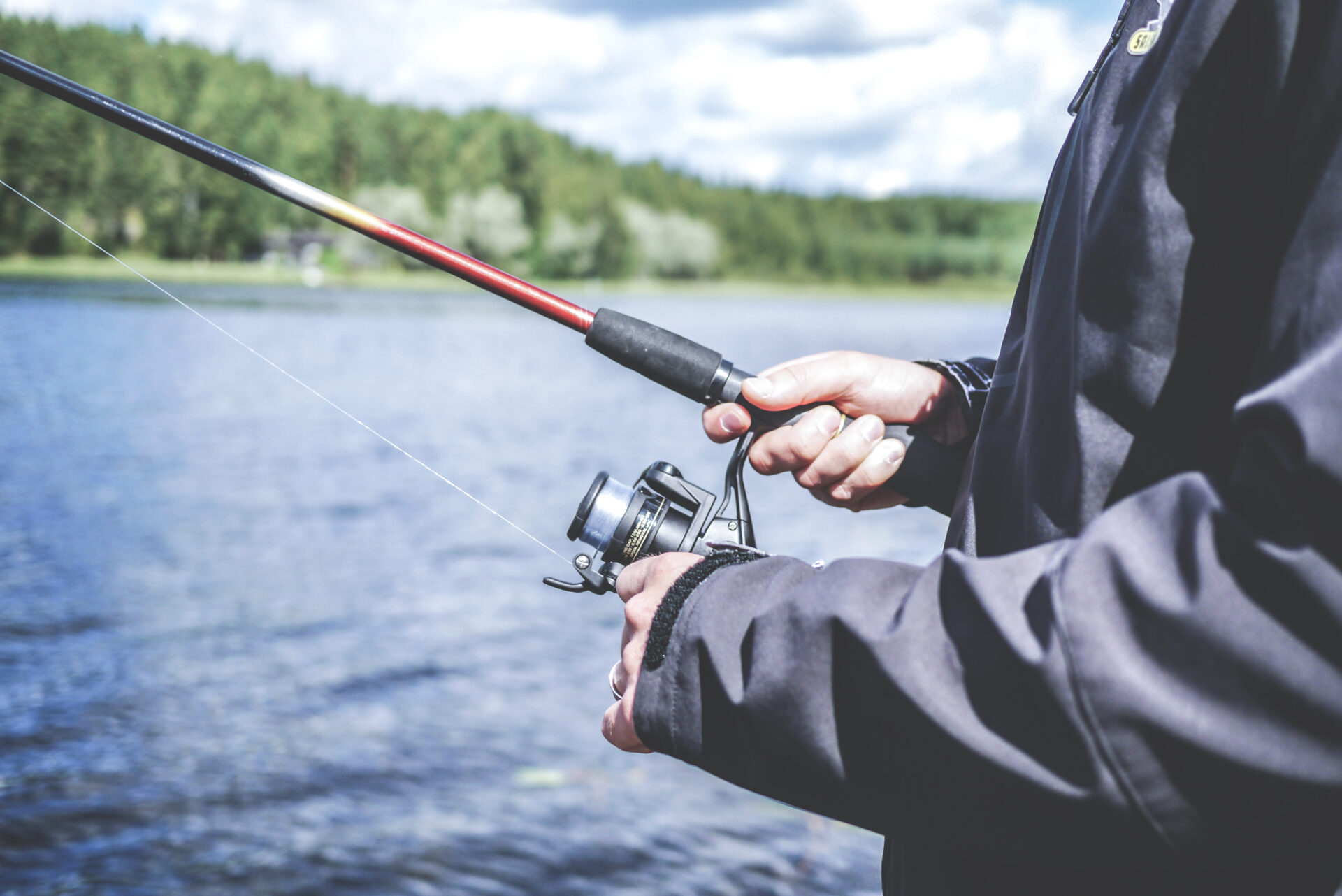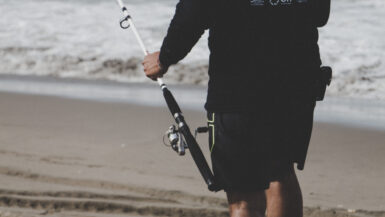Fishing is an age-old hobby that has become increasingly popular in recent years. This is especially true for freshwater fishing, as it is usually more accessible and easier to learn than other types of fishing. To make your fishing trips even more successful, it is important to have the correct equipment, including a fish finder. Fish finders can help you locate more fish and make it easier for you to target the species that you are after. In this article, we will discuss how to choose and use a fish finder for freshwater fishing, so that you can make the most out of your fishing trips.
Types of Fish Finders
Fish finders are electronic devices which can be used to detect school of fish under the water. They use sonar technology to transmit sound waves and measure their reflections from the bottom of the water. These devices can be used both in saltwater and freshwater fishing.
Different Types of Fish Finders
Fish finders come in various shapes and sizes. They can range from compact, handheld devices to deeper-water models that can be mounted on the boat. The type of fish finder you choose will depend on your needs and the type of freshwater fishing you are doing. Here are some of the most common types of fish finders:
Stand-Alone Fish Finder
A stand-alone fish finder is a portable device that can be easily carried and operated by just one person. It is ideal for anglers who want to find fish quickly and accurately. These devices can be mounted on a boat, dock, or kayak. They are typically equipped with a color display, so you can easily see the sonar readings.
Color LCD Fish Finder
A color LCD fish finder is a larger and more powerful device than a stand-alone fish finder. It has a bigger display, which allows for better viewing of the sonar readings and is capable of providing a more detailed picture of the underwater environment. These fish finders typically come with various features, such as GPS, mapping, and depth readings.
Chirp Fish Finders
Chirp fish finders are the most advanced type of fish finder. They use a technology called Compressed High-Intensity Radiated Pulse (CHIRP) to produce sound waves with varying frequencies. This allows for more accurate readings and clearer images of the underwater environment. These devices are ideal for more experienced anglers who require precision and reliability.
Marine Radars
Marine radars are the most advanced type of fish finder. They use high-frequency radio waves, which are capable of detecting even the smallest objects in the water. Marine radars can be used to detect schools of fish, changes in water depth, and underwater obstacles. They are ideal for serious anglers who need to have the best equipment.
How to Use Fish Finders Effectively
Fish finders can be a great tool for freshwater fishing, but it’s important to understand how to use them effectively. It is important to understand the different types of fish finders and their features, as well as the sonar technology used. It is also important to adjust the settings of the device to suit the type of fishing you are doing. With some practice, you can learn to interpret the sonar readings and find fish more accurately.
Benefits of Using a Fish Finder
One of the biggest advantages of owning and using a fish finder is that it can help you to discover secret fishing hotspots in freshwater. Fish finders use sonar technology to emit sound waves that penetrate the underwater environment and allow you to see what is beneath the surface. You can use the results of the sound waves to plot out where the best spots for fishing are in your local lake or river. This can be a great way to find hidden gems for your freshwater fishing trips.
Knowing the Proper Depths for Fishing
Another major benefit of using a fish finder is that it can help you to determine proper depths for fishing. Water depths vary greatly depending on where you are fishing, so it is important to know the proper depths for each spot. The data gathered by your fish finder can help you to determine exactly which areas are the best for fishing, and the right depths to target.
Identifying Fish Species
With a fish finder, you can also identify different fish species that may be in the area. The sound waves emitted by the device will show you the shape and size of the fish, enabling you to identify what type of fish is swimming beneath you. This can be extremely helpful in deciding the best bait and techniques for catching your desired species of fish.
Finding Unusual Bait Sources
Finally, using a fish finder can even help you to find unusual bait sources in freshwater. Fish finders can help you with everything from locating bait fish to identifying unique plants and other sources of food that can be used to attract the fish. This is great for anglers who are looking for an edge by using unique bait to bring in the big catch.
These are just a few of the benefits of using a fish finder for freshwater fishing. With the right device and a little practice, you can become an expert angler in no time. Be sure to do your research and pick a fish finder that suits your needs and budget so you can make the most of your fishing trips.
Pre-Purchase Considerations
Before choosing a fish finder for freshwater fishing, it is important to consider the type of fish you are targeting and the type of water you will be fishing in. Different types of fish finders are better suited for different types of fishing. Knowing the type of fish and water you will be fishing in will help you determine which type of fish finder is best for you.
Types of Fish Finders
Fish finders come in several different types. Some of the most common types are side-scanning sonar, down-scanning sonar, and GPS-enabled fish finders. Each type has its own advantages and disadvantages, and it is important to understand the differences between them before buying.
Side-scanning sonar is one of the most popular types of fish finders. This type of fish finder uses pulsed sonar signals to create a three-dimensional image of the water below and the objects within it, including fish. Side-scanning sonar can be used to locate schools of fish and bottom structure, making it a great choice for freshwater fishing.
Down-scanning sonar is also popular among freshwater anglers. This type of fish finder uses narrow beams of sonar to scan the bottom and sides of the water column. It is more accurate than side-scanning sonar, but it is also more expensive.
GPS-enabled fish finders are the newest type of fish finder on the market. These fish finders combine GPS and sonar technology to provide anglers with an accurate representation of their exact location in the water, along with detailed information about the bottom structure and the location of fish. GPS-enabled fish finders are perfect for anglers who want to find the best fishing spots quickly and accurately.
Size and Price Considerations
When choosing a fish finder for freshwater fishing, it is important to consider the size and price of the unit. Fishing in freshwater requires a smaller, lighter fish finder than saltwater fishing. Smaller, lightweight fish finders can be easier to transport and store, and they often cost less than larger, heavier models.
It is also important to consider the features and capabilities of the fish finder. Basic models may provide basic information such as water temperature and depth, while more advanced models may include features such as waypoint mapping and underwater imaging. Before purchasing a fish finder, make sure that it has the features and capabilities that you need.
Installation and Maintenance Requirements
Finally, it is important to consider the installation and maintenance requirements for the particular fish finder you are considering. Some models are very simple and can be set up and operated with little effort, while others may require professional installation and more maintenance. Make sure you understand the requirements for installing and operating the fish finder before making a purchase.
By taking the time to consider these pre-purchase considerations, you can ensure that you choose the right fish finder for freshwater fishing and get the most out of your purchase.
Setting Up Your Fish Finder
Choosing the right fish finder for freshwater fishing can be a daunting task, but with the right information you can make an informed decision that will help you improve your chances of success. Fish finders are useful tools for every angler looking to have a successful day on the lake. They provide invaluable insight into the depths, location, and type of fish in the water. When it comes to setting up your fish finder, there are a few key pieces of equipment that you need to consider.
Power Source For Your Fish Finder
The most important piece of equipment for setting up your fish finder is the power source. Fish finders typically require a 12V power source, so you’ll need to make sure you have the right cables and adapters for your specific model. In most cases, the easiest and most cost-effective option is to use a battery-powered fish finder. This eliminates the need for extra wiring and allows you to stay mobile.
Mounting Your Fish Finder
Once you have the power source in place, it’s time to mount the fish finder. Most modern fish finders come with a mounting system that can be attached to your boat, or you can purchase an aftermarket mounting system to give you more flexibility. Make sure to secure the mounting system properly so your fish finder won’t be damaged by waves or other water movements.
Tuning the Fish Finder
Once your fish finder is mounted, it’s time to calibrate it. This involves adjusting the sensitivity, range, and zoom so the device can read the correct data. This can be done manually or with the help of an app, depending on the make and model of your fish finder. Make sure to read the user manual carefully to ensure you’re setting up your fish finder correctly.
Setting Up Fish Finder Transducers
Transducers are what allow your fish finder to detect the fish in the water. A transducer is typically mounted on the side of the boat and sends out a signal that helps to determine the size, depth, and type of fish present. Make sure to mount the transducer securely and adjust the angle so it will read the target species as accurately as possible.
Learn the Basics of Fish Finder Operation
Now that you’ve mounted and set up your fish finder, it’s time to learn how to operate it. Every fish finder is different, so make sure to read the user manual thoroughly and learn how to utilize all of the features. With a little practice, you’ll be able to read the data and find the fish you’re looking for.
Practice Safe Habits When Using Fish Finders
When using a fish finder, it’s important to keep safety in mind. Always pay attention to your surroundings and follow all boating regulations. Make sure to follow the manufacturer’s instructions and never leave your device unattended while it’s powered on. With the right safety practices, you can use your fish finder with confidence and improve your chances of success when freshwater fishing.
Configuring Your Fish Finder
Whether using a handheld fish finder or a traditional depth & fish finder combo, freshwater anglers should understand the technology available. Sonar (short for Sound Navigation and Ranging) is a tool used to locate, identify and track objects in water. It works by emitting sound waves that travel through the water and then return to the receiver. The sound waves bounce off objects like fish and return to the receiver as an echo. The fish finder displays the information on a screen, usually with a black background and colored blips that indicate the location of objects.
Choose the Right Fish Finder
When it comes to fish finders, size, capabilities and price can vary. Some of the features to consider when choosing a fish finder include display size, resolution, power output, dual-frequency transducers and GPS mapping. If you plan on fishing in shallow waters and want to save some money, a simple handheld unit may be sufficient. For deeper waters and greater accuracy, a combination depth and fish finder unit with a larger display may be your best bet.
Check Transducer Specifications
The transducer is the component of the fish finder that emits the sound waves, so it’s important to check the specifications of any transducer you consider. The frequency of the transducer’s signal is usually measured in kilohertz (kHz). The lower the frequency, the lower the resolution on the display and the less detail you’ll be able to see. Higher frequencies can provide greater accuracy and detail but they can also be more expensive.
Mount the Transducer
The transducer is usually mounted on the bottom or side of your boat. Try to avoid mounting it in areas that are exposed to turbulence, such as near the propeller or on a flat surface. The best spot is usually at the centerline of the boat, just below the waterline. Make sure to secure the transducer firmly with clamps or rope to keep it from vibrating or wobbling in the water.
Connect the Display
The fish finder display is responsible for interpreting the echoes from the transducer and displaying them on the screen. Connect the display to the transducer via a power and data cable. Preferably, pick a cable with a higher gauge, such as a 16- or 18-gauge, as this will deliver optimal data and power.
Adjust the Settings
Once the transducer and the display are connected, you can begin 1 the adjust the settings on the fish finder. Most units will allow you to change the sensitivity, noise rejection, depth range and other settings. Take some time to familiarize yourself with the menus and the specific features of your fish finder. Doing so can help you maximize the performance of your device and get the most out of fishing trips.
Using Your Fish Finder
Before you can begin using your fish finder, it is important to familiarize yourself with its features and controls. Familiarizing yourself with the device’s specifications, display, and settings will ensure you are able to make the most of your device. Consult the user manual to become aware of the device’s capabilities as well as recommended setup and operation.
Choose the Right Settings for Your Fishing Conditions
Once you are familiar with the device and its capabilities, you can choose the appropriate settings for your current fishing conditions. Depending on the type of body of water, water depth, and the target species, different settings will be more or less effective. For example, a higher sonar frequency is better for shallow water and smaller targets, while a lower frequency is more suitable for deeper water and larger targets.
Deployment and Retrieval of Your Fish Finder
To deploy your fish finder in the water, you need to use a suitable mounting system. This could either be a clamp mount, or a trolling mount. You should also attach a float to the device, to ensure that it can float to the surface should it come loose or lose power.
When retrieving your fish finder out of the water, take extra care to ensure that it will not be damaged. Carefully lift the device out of the water and place it onto a soft surface, such as a towel. Ensure that the device is dried off thoroughly before storing it away.
Create an Image of the Bottom Structure
Now that you have deployed your fish finder into the water and set the appropriate settings, you will be able to create an image of the bottom structure.This image is known as a depth chart – a map of the features located beneath the water’s surface. By observing this map, you can gain insight into what the bottom of the body of water looks like, and which areas may be most likely to hold fish.
Observe and Interpret Your Fish Finder’s Readings
You should regularly keep an eye on the readings from your fish finder, to ensure that you remain aware of changes in the bottom structure. The fish finder will show any fish, baitfish, or other forms of aquatic life that are present in the area. To ensure you are able to correctly interpret your fish finder’s readings, it is important to familiarize yourself with the symbols and colors used on the device.
Preserve Battery Life
To ensure your fish finder will last a long time, it is crucial to preserve its battery life. To do this, you should generally only use the device when necessary, and switch it off when it is not in use. If you have a rechargeable battery, make sure you recharge it after each use.
A Guide to Enhancing Your Fishing Experience
Fish finders for freshwater fishing are essential tools for anglers of any skill level. With the right fish finder, you can easily locate and identify fish in any body of water, allowing you to make the most of your fishing experience. When choosing and using a fish finder, be sure to consider the type of water you’re fishing in, the size of the target species, and the features you need to locate fish quickly and accurately. With a bit of practice and the right equipment, you can become a more successful angler and enjoy the ultimate fishing experience.





Leave a reply